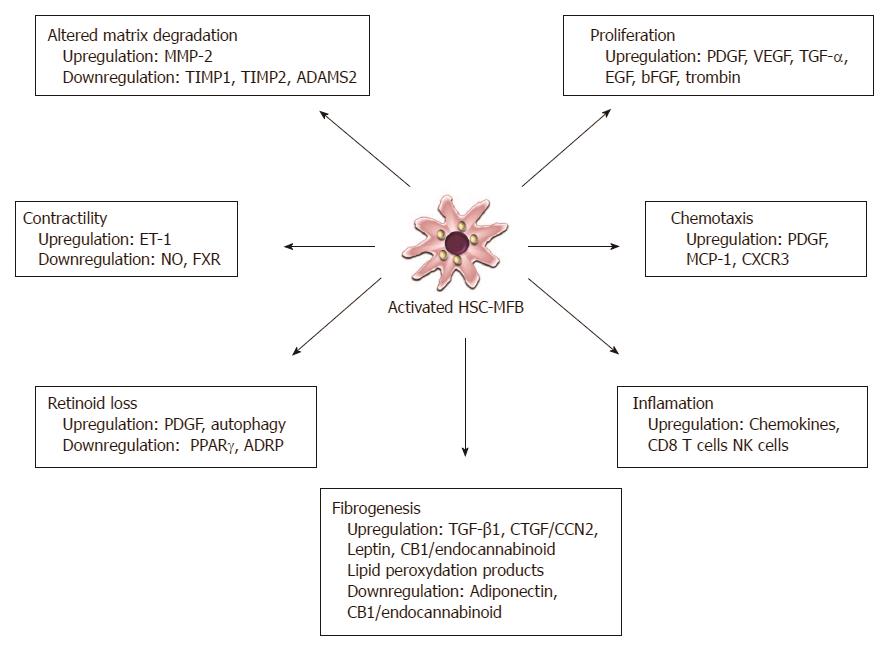Copyright
©2014 Baishideng Publishing Group Inc.
World J Gastroenterol. Jun 21, 2014; 20(23): 7260-7276
Published online Jun 21, 2014. doi: 10.3748/wjg.v20.i23.7260
Published online Jun 21, 2014. doi: 10.3748/wjg.v20.i23.7260
Figure 3 Hepatic myofibroblasts myofibroblasts have multiple functions during liver fibrogenesis.
In the activated form, hepatic stellate cells show de novo properties, including increased proliferation, fibrogenesis, contractility, chemotaxis, matrix degradation, retinoid loss and secretion of chemokines. Each of these properties is controlled by the release of many cytokines acting in an autocrine and paracrine manner offering many potential sites for therapeutic intervention. MMP: Matrix metalloproteinase; TIMP: Tissue inhibitor of matrix metalloproteinase; ADAMS2: A disintegrin and metalloproteinase 2; PDGF: Platelet derived growth factor; VEGF: Vascular endothelial growth factor; TGF-α: Transforming growth factor-α; EGF: Epidermal growth factor; bFGF: Basic fibroblast growth factor; TGF-β1: Transforming growth factor-β1; CTGF/CCN2: Connective tissue growth factor; ET-1: Endothelin 1; NO: Nitric oxide; FXR: Farnesoid X receptor; PPARγ: Peroxisome proliferators activated nuclear receptorsγ; ADRP: Adipose differentiation related protein.
- Citation: Elpek G&. Cellular and molecular mechanisms in the pathogenesis of liver fibrosis: An update. World J Gastroenterol 2014; 20(23): 7260-7276
- URL: https://www.wjgnet.com/1007-9327/full/v20/i23/7260.htm
- DOI: https://dx.doi.org/10.3748/wjg.v20.i23.7260









